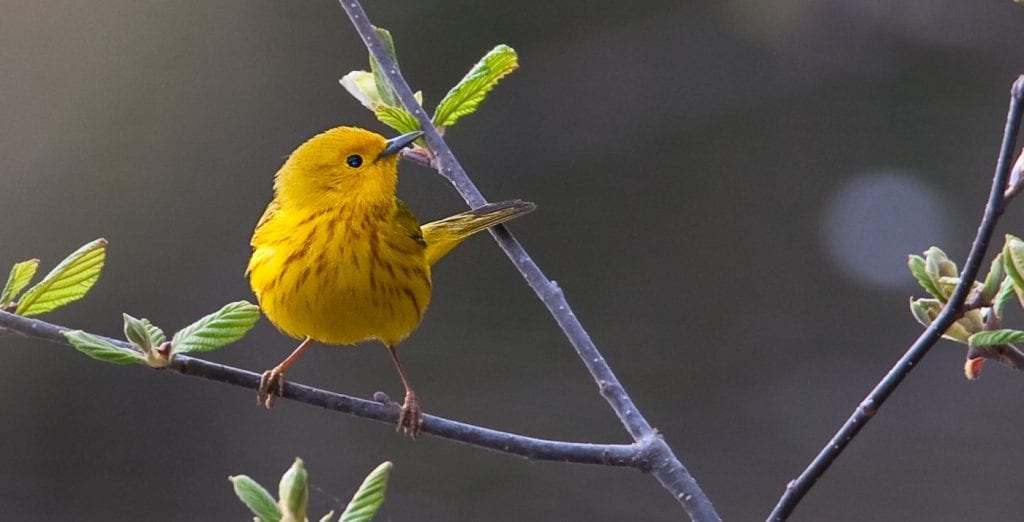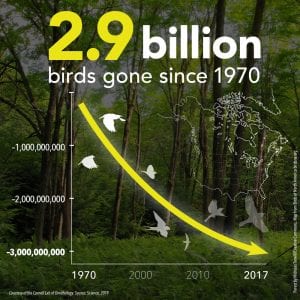
A shocking new report published this week in the journal Science has outlined what many avid birders in Maine have been telling us for years: the number of birds we are seeing in our fields, forests, coastlines, and even our feeders is shrinking. Dramatically shrinking — on average by 29%, or one in every four birds — across all North American taxonomic groups and biomes since 1970. Even greater declines are being seen in certain groups, including 74% of all grassland species, 68% percent of shorebird species, 73% of species that eat aerial insects, and 64% of all eastern forest bird species. The only bird group with increasing numbers are wetland birds, which is driven by increased numbers of ducks and geese thanks to concerted conservation and advocacy efforts.
The numbers are based on data from a variety of sources, including nearly 50 years of North American Breeding Bird Surveys, Audubon Christmas Bird Counts, and Partners in Flight Population Estimates, plus Shorebird Migration Studies and USFWS Breeding Waterfowl Surveys. Radar studies from across the continent have also documented a dramatic decline of around 13% in the total biomass of birds passing overhead during migration during just the past 10 years.
This has dire implications for the future of our ecosystems, where birds play a key role in the circle of life. But as we’ve seen from past experiences where we have focused a lot of attention on reversing dangerous downward trends — such as with the near extinction of the Bald Eagle that suffered from exposure to toxic DDT, or the dramatic decline of many of our ducks and geese that lost millions of acres of wetland breeding habitat and were also overhunted — we can take steps to stop the declines. And every bit helps.
That’s why right now Maine Audubon is working with small forest landowners to manage their forests “with birds in mind;” with coastal beach landowners to protect endangered piping plover and least tern nests from people, dogs, and predators; and with urban and suburban landowners to landscape with native plants that provide nectar, pollen, and bugs for birds, butterflies and moths. But there’s still more we can do.
For more information about how you can help, please visit www.3billionbirds.org/

